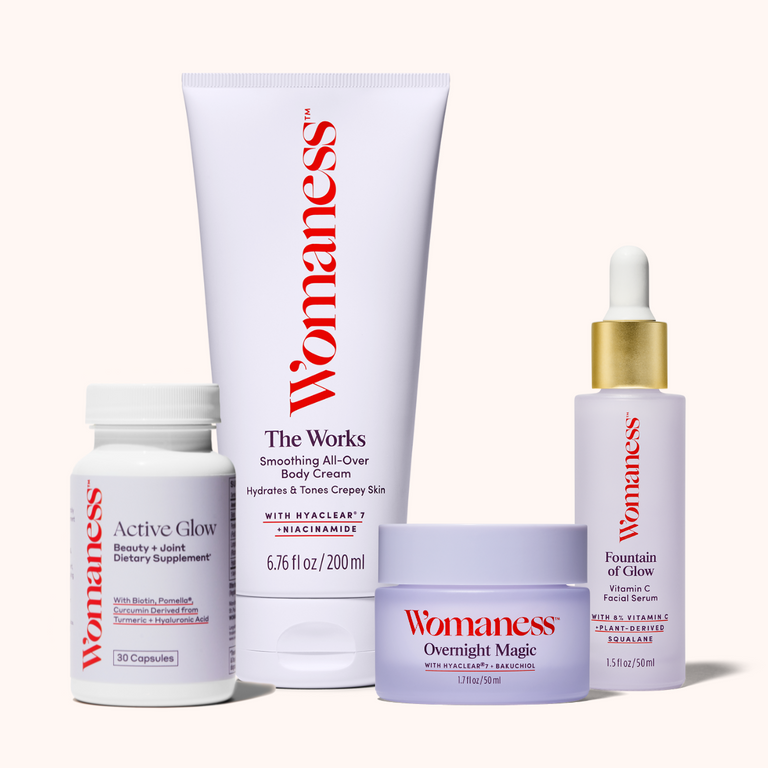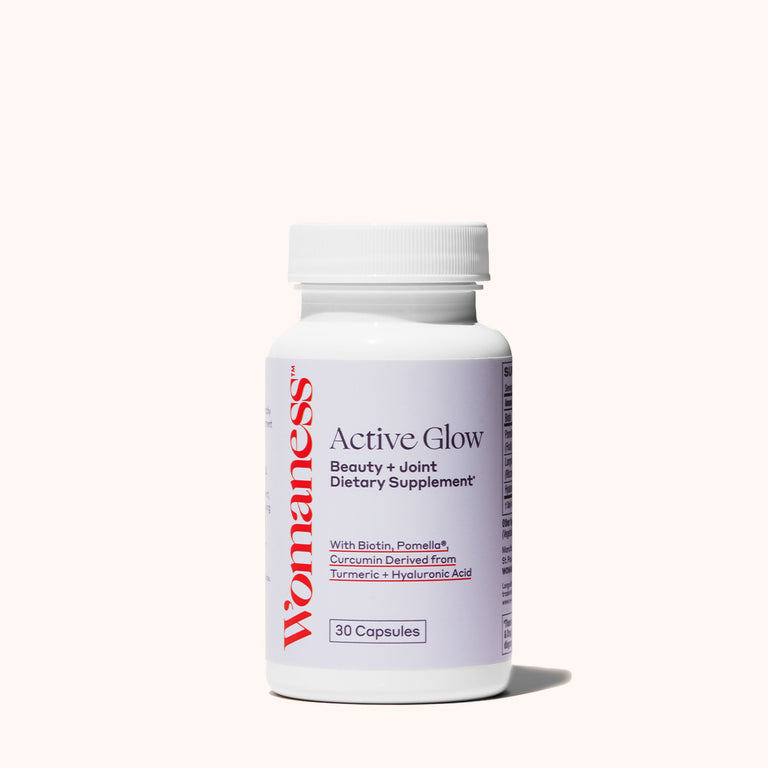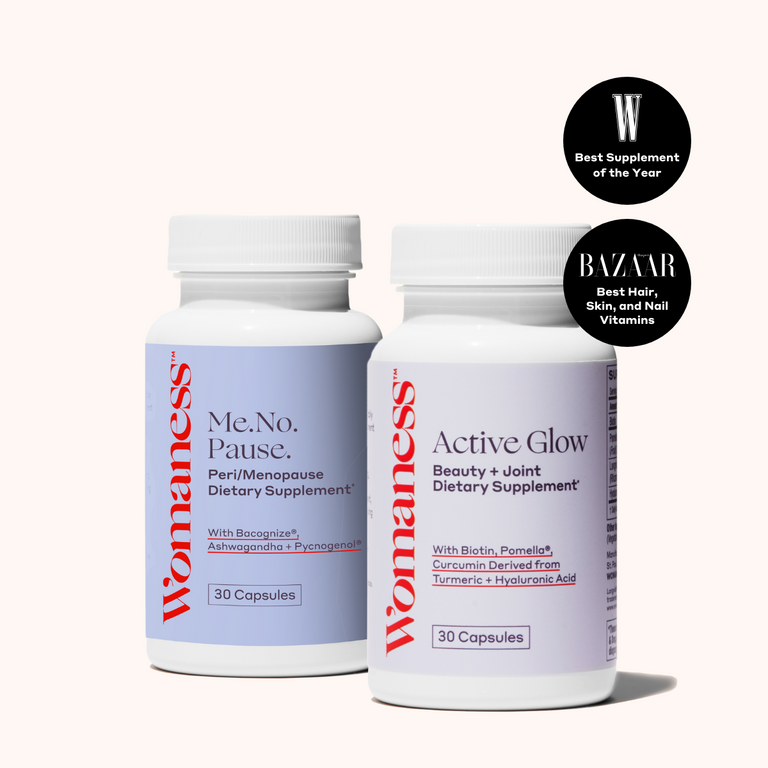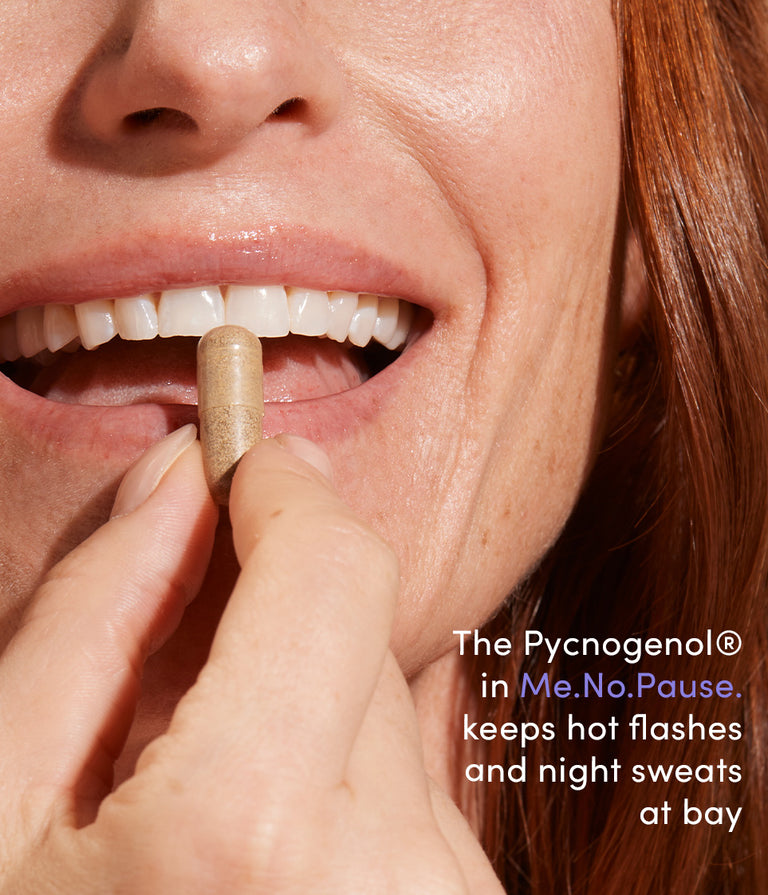By Womaness Editors 3-Minute Read
Menstrual health? Check. Fertility issues? Understood. When it comes to women’s reproductive health today, there is transparency and overwhelming support wherever you look. So why is menopause still the elephant lurking in the corner? A 2010 study documented this lack of awareness. Published in the journal Women’s Health Issues, it concluded there was a gap for women in information about menopausal symptoms and how to cope with them. A decade later, the gap endures. How can we do better? The first step is getting concise, clear information on what each phase of menopause looks like so you can prepare, find solutions, and thrive. We're here to help get you started with a quick primer on the stages of menopause.
1. PERIMENOPAUSE: EXPECT THE UNEXPECTED
Typical Age: Mid- To Late 40s
Perimenopause means “around menopause,” the time your body preps for the end of its reproductive years (careful, though—you can still get pregnant). This first phase of menopause can start as early as mid-30s, but usually begins in your mid- to late 40s. It’s a bit of a rollercoaster ride: Your levels of estrogen unevenly rise and fall, creating shorter and longer periods as well as a few menopause-like issues (think hot flashes, sleep problems, and vaginal dryness).
2. MENOPAUSE: GOODBYE, PERIODS
Typical Age: Late 40s to Early 50s
Technically, you’re in menopause after you’ve gone 12 consecutive months without your period (or if it stops permanently as the result of a medical treatment). While the average age is 51, “the change” can occur in your 40s or 50s. And though it’s a completely natural and totally normal process, the physical symptoms feel anything but. Once you’ve hit this phase of menopause, hot flashes, brain fog, sleep issues, mood swings, headaches, decreased libido, and joint pain become the norm.
3. POSTMENOPAUSE: MOOD UP, ESTROGEN DOWN
Typical Age: 50+
Postmenopause begins once you hit the one-year mark from your final period—and is a permanent stage that lasts from that point onward. The good news: your earlier menopause symptoms may gradually ease up (and hey, no more periods!). And the bad? Hot flashes, sleep issues and vaginal dryness still affect some women. Thanks to a decline in your estrogen, this third stage may also include an increased risk of osteoporosis and heart disease, so it’s smart to consult your doctor to assess your risk—and help you make this half of your life your best one.
BUT WHAT ABOUT EARLY OR PREMATURE MENOPAUSE?
Typical Ages: Before 40 to 45
While most women reach menopause between the ages of 45 and 55, about one percent of women enter menopause before the age of 40. This is known as "premature menopause." Menopause between the ages 41 and 45 is called "early menopause." The predominant cause of premature menopause is surgical removal of the ovaries or by medical treatments such as radiation therapy or chemotherapy. But family history or lifestyle choices such as smoking can affect the timing as well. The symptoms are largely the same. (Just can’t cut a break, right?)
Unsure where you fall in the journey? Our W Quiz takes less than a minute and can help identify where you are in these phases of menopause and what can help you tackle bothersome symptoms.
More Menopause 101
Perimenopause: All You Need To Know
Surprising Symptoms, Real Solutions
Top Menopause Myths: Dr. Ekta Kapoor







